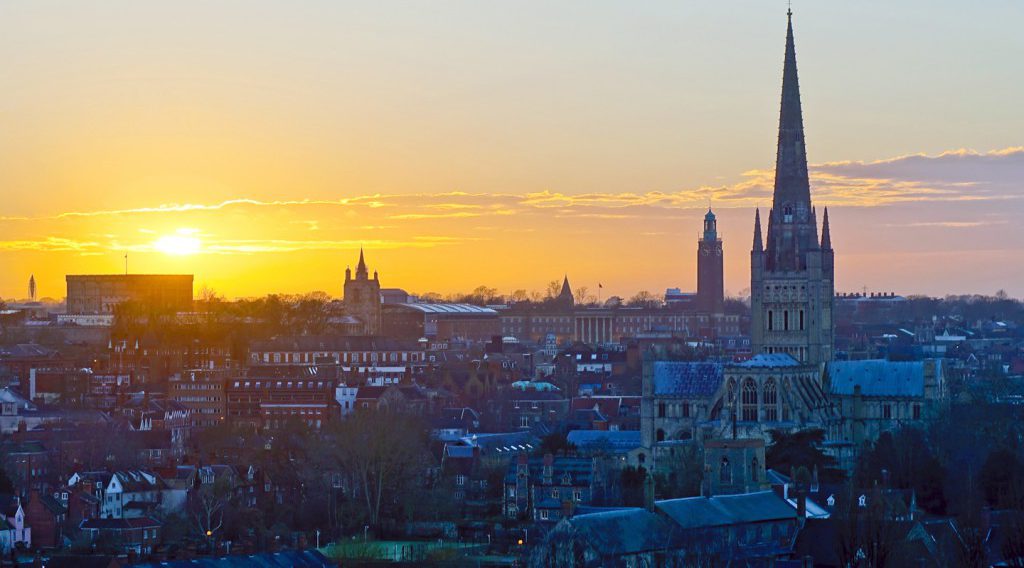Welcome Back, and we are back to the only numbers people actually care about, the top 10. If you disagree and want to see 31-50 and 11-30, please click on the links, but if you only care about the real big hitters, this is the place to be. If you disagree profoundly with this list, you have my permission to write a long letter of complaint, which I won’t read, or a counter list, which I will possibly read. So blow the 2019 Election cobwebs away, and get back to what December 2019 is really about, end of decade lists. Now let’s get on with the top 10.
10
Wolf Alice
Visions of a Life
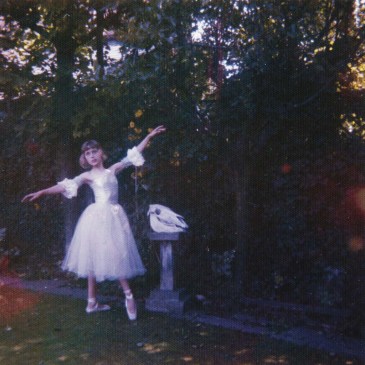
Throughout the decade, there has been a decline in good new Indie Rock bands. With the likes of The Vaccines, Catfish and the Bottlemen and Blossoms being among the biggest, all of which not particularly unique or interesting, British Indie has struggled this decade. One notable exception however, is Wolf Alice, who from the release of ‘Blush EP’ in 2013 slowly gathered support to become a rarity, an Indie Rock band formed in the 2010s with both a big fan base and critical praise. Their best album however was their most recent release, ‘Visions of Life’. In just the first 12 minutes of the album on the four songs, the band show versatility without sounding out of place, with the shoeglaze inspired ‘Heavenward’, the moody punk number of ‘Yuk Foo’, the catchy straight up Indie of ‘Beautifully Unconventional’ and the standout cinematic ‘Don’t Delete The Kisses’. Like all of Wolf Alice, this album is fronted by the personality of Ellie Roswell who brilliantly leads the line with the tenderness of ‘Don’t Delete The Kisses’, aggression on ‘Formidable Cool’ and ‘Visions of a Life’ and just pure brilliance on the atmospheric ‘Planet Hunter’. This is the brightest light of Indie Rock this decade, is as varied as it is a distinctly modern take on a mostly worn out genre.
Essential Tracks: ‘Don’t Delete The Kisses’ ‘Planet Hunter’ ‘Formidable Cool’
9
Frank Ocean
Channel Orange
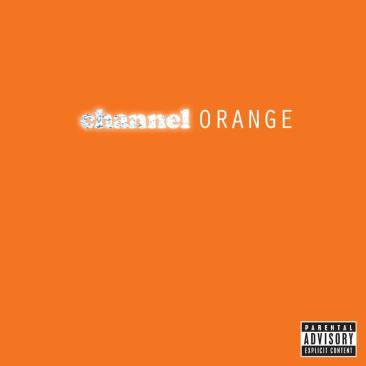
In reality, any album with as song as brilliant as ‘Pyramids’ was always going to make it onto the list, but the reason why Channel Orange makes it so high on the list is due to its concept nature and subject matter which is far more broader than ‘Blonde’. While a lot of songs, like ‘Thinkin Bout You’, ‘Sierra Leone’ and ‘Sweet Life’ are brilliant RnB songs, they shine brighter in the foundation of a concept album exploring sexuality, drug dependence, loneliness, religion and even on the previously mentioned ‘Pyramids’ the legacy of the slave trade. While Earl Sweatshirt and Andre 3000 shine on their verses, Ocean is the star, and this album, using elements of RnB, Soul, Funk, EDM and psychedelica is a one of a kind. Most of all, this album brings out Ocean’s songwriting, creative and vocal talent which is more advanced than his contemporaries.
Essential Tracks: ‘Thinkin Bout You’ ‘Super Rich Kids’ ‘Pyramids’
8
Disclosure
Settle
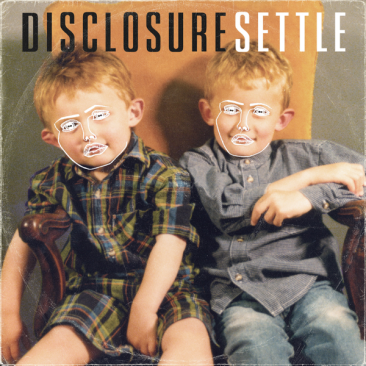
3rd of June 2013, two albums came up against each other for number in a week which would give me unrealistic expectations of new releases for the rest of the decade, one was ‘…Like Clockwork’ (11), and the other was ‘Settle (8)’. Settle won the race and the Lawrence Brothers got the credit they deserved for creating the sound of my first few months being able to go clubbing, and every time I listen to this record it brings me back to that time again. In an era where EDM was dominating, Disclosure dropped a sound which was so fresh and so good that by the time they went to make a second album the mainstream form of deep house they had ushered in had in effect eaten itself (see the late 2014 charts). ‘White Noise’ should be remembered as our generations ‘Blue Monday’, while other singles like ‘You and Me’, ‘Latch’ and ‘F for You’ proved that the formula Disclosure had come across was not a one off. The other two tracks I shall mention show the range of this album, ‘When a Fire Starts to Burn’, a song which demonstrates Disclosure at their most potent, and ‘Help Me Lose My Mind’, the majestic closing track featuring London Grammer, demonstrates their music’s crossover appeal from the dancefloor to music to study to.
Essential Tracks: ‘When a Fire Starts to Burn’ ‘White Noise’ ‘Help Me Lose My Mind’
7
Car Seat Headrest
Twin Fantasy (Face To Face)
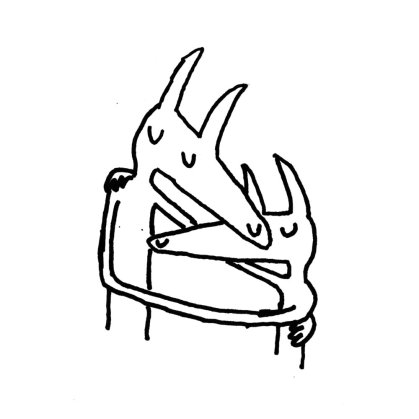
Their second album to make it onto this list, Twin Fantasy was originally recorded by Will Toledo on his own on his laptop. After the success of ‘Teens of Denial’ Toledo was able to get the opportunity to rerecord the album, enhance some of the lyrical content, and bring it to a bigger audience, and it was well and truly worth it. The album, based on a relationship Toledo was in at the time of its original recording (2011), combined the skill of Toledo’s lyrical prowess on ‘Teens of Denial’ with a mix of more musical complexity. The structure of the album sandwiches a run of 4 songs which are as close to mainstream rock as Car Seat Headrest will get to with 3 songs of prog like standing on either side, the best of which being the brilliant ‘Famous Prophets (Stars)’. However the four song run in the middle of the album is also the best section, with the euthoric ending of fading in and out guitars of ‘High to Death’, the Hot Fuss era Killers sounding ‘Famous young Inhumans’, the joyous ‘Bodies’ and the bittersweet, Frank Ocean name checking ‘Cute Thing’.
Essential Tracks: ‘High to Death’ ‘Cute Thing’ ‘Famous Prophets (Stars)’
6
Jamie XX
In Colour

It would be bizarre in 2010 to say that the best electronic album of the next 10 years would be from the guy who just produced the first The XX album. But in 2015, when Jamie XX jumped the joyous ‘In Colour’ he did exactly that, combining his own personal touch to genres like Garage (‘Gosh’), Trap (‘I Know There’s Gonna Be (Good Times)’) and atmospheric Jon Hopkins electronica (‘Hold Tight’). A lot of the best stuff here is with his other The XX members, especially the Romy featuring songs like the uplifting ‘Loud Places’, but best of all is ‘Girl’, a song which brilliantly rises through peaks and valleys of voice harmonizers, electronica, drums and bass.
Essential Tracks: ‘SeeSaw’ ‘Loud Places’ ‘Girl’
5
Lorde
Melodrama
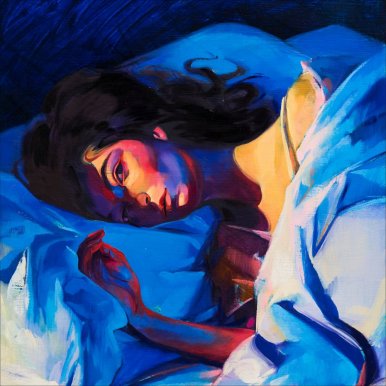
The pop album of the decade, Lorde’s 2nd album perfectly captured what it means to be in your late teens/early twenties in the 21st century, and both the recklessness and often loneliness which comes with it. While the opening side of the album, and particularly ‘Green Light’ and ‘Homemade Dynamite’, capture the bright side of this, the freedom and the often never ending partying, the second half of the album deals with the downsides and consequences of what happens during this age. The cinematic reprise of ‘Sober (Melodrama)’ sets the tone, while the Kate Bush inspired ‘Writer in The Dark’ highlights the pain caused between relationships and newfound fame. ‘Supercut’ continues the theme of a loss of a relationship, in the form of an electro-pop thumper, and is as bittersweet and relatable as songs come. Finally ‘Perfect Places’ hits hard of so many of us go out partying every weekend, trying to reach a level of happiness which is unattainable, and trying to avoid being alone with your own thoughts and lonely. You can tell Lorde was 20 when she wrote the album, as she perfectly captures the emotion of that age.
Essential Tracks: ‘Green Light’ ‘Homemade Dynamite’ ‘Supercut’
4
Kanye West
My Beautiful Dark Twisted Fantasy
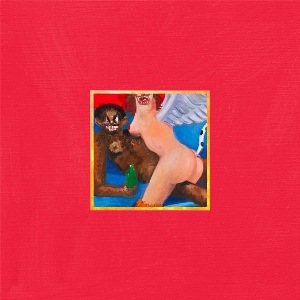
Here is where the list becomes very predictable, and I have not seen a single list where this album is not in the top ten and for good reason. The most controversial artist of the 21st century started the decade with an album which took what he had done over his first 4 albums, and came up with something which was the ultimate of what that music could achieve. From the eclectic sample of Mike Oldfield in opening track ‘Dark Fantasy’, to the reimagination of Gil-Scott Heron’s ‘Comment No. 1’ on ‘Who Will Survive in America’, this album raised the bar on what a Hip Hop album could be. Second song ‘Gorgeous’ brilliant uses both the original and a cover of ‘You Showed Me’ by The Turtles to construct the instrumental content, while Kanye (with some help from Wu Tang Clan’s Raekwon) calls out institutional racism, sexism and even South Park.
‘Power’ is so effective as an epic single that many people I know who hate Hip Hop love it, while the 6 minute star studded ‘All of the Lights’ sounds as massive as its featured artists suggest it should. ‘Monster’ is one for a real hip hop fan, when while Kanye West and Jay Z put in some of their best verses, Nicki Minaj, who I usually despise, temporarily becomes the greatest rapper alive. ‘Devil in the New Dress’ floats on a gorgeous Smokey Robinson sample, with a goosebumps guitar solo from Bon Iver’s Justin Vernon, but it says a lot about this album that all this is just a warm-up act for the tour-de-force of ‘Runaway’ while its down beat, heartbreaking electronica and use of Pusha T and autotune is objectively better than anything else in Kanye West’s discography. Even after this 9 minute epic you still have the industrial Black Sabbath interloping ‘Hell of a Life’, the first half heartbreaking second half hilarious ‘Blame Game’ and the euphoric double header of ‘Lost in the World’ and ‘Who Will Survive in America’. When this dropped many thought it would take an awful lot to better this as a hip hop album, yet on this blog 3 did…
Essential Tracks: ‘All of The Lights’ ‘Runaway’ ‘Blame Game’
3
Kanye West
Yeezus
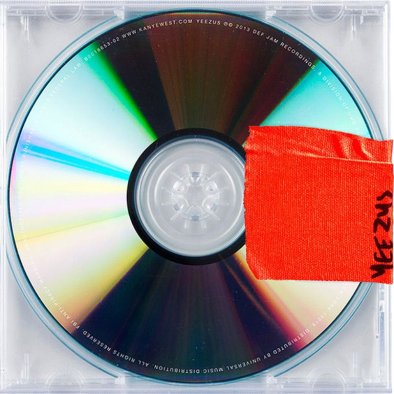
While for many ‘My Beautiful Dark Twisted Fantasy’ will be Kanye West’s masterpiece, I feel that its follow up, the minimalist out of this world ‘Yeezus’, is his greatest achievement. From the very moment the harsh, industrial, Daft Punk produced electronic synths blast from the speakers of the opening track, ‘On Sight’, this album sets the tone as being as absolutely on edge and bipolar is as Kanye West is himself, and creates a sound like of which I have never heard before or since. This album is the real portrait of Kanye himself, being as unhinged, balancing the tightrope between madness and genius, dropping from harsh electro beats to a soul sample for 5 seconds and then back to harsh electro beats again on the opening track alone. The lyrical content as well is so quotable. Not in an introspective Kendrick Lamar way, but in a Star Wars, every line is iconic way. Things like the sweet and sour sauce line on ‘I’m in it’ or the Parkinson’s line on ‘On Sight’ or the croissants line on ‘I Am a God’ are not the most intelligent lines in the world, but they are just provocative, they are funny, not PC but they are just so digestible and moreish, they’re earworms.
The drums on second song ‘Black Skinhead’, and the aggression of Kanyes raps out white America’s view of successful black people, would be highlight on any hip hop album, but it’s not even the best song on that subject on this one. That goes to the inspired ‘New Slaves’ where Kanye lays down the best verse of his career during the first dark, synthy half of the song before the song breaks into a sample from a 1970s Hungarian prog rock band (would any other artist EVER dare to do that) Omega in the final minute of the song. The politics espoused on this record are so far removed of the con Kanye has fallen for now I am desperate for this Kanye to come back. Of course, one thing Kanye West has always been called out for is his ego, and Kanye addresses this by doubling down on ‘I Am a God’, which again uses industrial beats as the instrumental and again evolves into about 3 different genres in the space of 4 minutes. ‘Hold My Liquor’, a song precisely about the abuse of alcohol, combines rap with Pink Floyd’s ‘Welcome to the Machine’ to brilliant effect, while ‘I’m In It’ is the most out there of the lot. ‘Blood on The Leaves’ takes Nina Simone’s ‘Strange Fruit’, adds trumpets and combines the strengths of the autotune of Runaway and the grandiose sound of ‘All of The Lights’ with an extra dose of Yeezus madness to create the centrepiece of the album. ‘Guilt Trip’ meanwhile is on paper the most unremarkable song on the album, but that still does what this album does, and falls off a cliffedge into almost an abattoir in a luscious violin led interlude, helped by Kid Cudi’s vocal performance. ‘On Sight’ sounds like Blade Runner on acid, while closer ‘Bound 2’, the most accessible song on the album, still manages to switch between two very different forms of music, from the soul sampling rap part of the verse, to the glorious ambient electronica while Charlie Wilson puts in a glorious vocal chorus. No other artist would have even dared make anything which sounded quite like Yeezus, and we are all the richer because Kanye West was the man who did.
Essential Tracks: ‘On Sight’ ‘New Slaves’ ‘Blood on the Leaves’
2
Kendrick Lamar
To Pimp a Butterfly
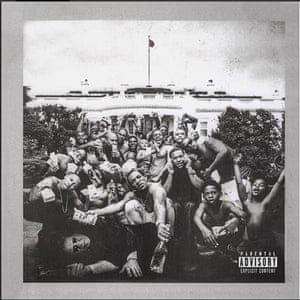
Both of my top two are 10/10 albums and it is very hard to choose between them. To Pimp a Butterfly is more than just an album, it is the most important album of the last decade, culturally, politically and in terms of musical content. Over a course of 16 songs Kendrick Lamar builds on the on ground analysis of Good Kid, M.A.A.D City and unravels the institutionalised racism built into America and the self-fulfilling prophecy of thousands of people from the socio-economic background of himself. He does this while telling a story of how he went from struggling to adjust to fame, being selfish and self-interested and ignorant, ‘the caterpillar’, to the enlightened selfless leader of his generation, ‘the butterfly’. This album is soaked in the tradition of West Coast Hip Hop, from the use of G-Funk and featuring P-Funks George Clinton and Dr Dre in opening track ‘Wesley’s Theory’ to the featurings of Snoop Dogg and Robert Isley, to the sampling of The Isley Brothers, Ahmad and James Brown throughout the album. There is also the ever presence of Kendrick Lamar’s hero, Tupac, who’s own life mirrors a lot of the themes running through the album. This album also has major jazz influences, as demonstrated in ‘(For Free)’ ‘U’ and ‘These Walls’.
The sample of Boris Gardiner’s ‘Every N***** is a Star’ is so apt for the rest of the album, giving the message of the album that if you can overcome the situation you were born into like Kendrick did, you can do anything. ‘Wesley’s Theory’ itself demonstrates the juvenile nature of Kendrick when he first got his record deal, while ominous messages are given by Dre, Thundercat and Clinton (‘Looking down is quite a drop, looking good when you’re on top’) are given to him as the antagonist of the album, ‘Uncle Sam’ tries to tempt him into following the mistakes of people like Tupac and as namechecked due to his tax evasions, Wesley Snipes. King Kunta, the only really ‘party’ song on the album, is absolutely funkalicious, but again demonstrates Kendrick’s selfishness to show off his newfound fame. ‘Institutionalised’ starts to dig a little deeper, using the attitude of one of his Compton friends he took to the BET awards to show an institutionalised mentality, while ‘These Walls’, a brilliant, jazzy number, tells a story of Kendrick getting revenge on a man who killed his friend by seducing his spouse. ‘U’ meanwhile is the ‘Comfortably Numb’ of rap, as Kendrick hits rock bottom lamenting his behaviour, and also shows his incredible rapping range, as he manages to rap in a form that makes him sound very drunk and emotional at the same time of having the lyrical content being flawless. ‘Alright’, a rejection of ‘Uncle Sam’ and the introduction of the other villain, a seductress called ‘Lucy’ (shorthand for Lucifer), has become more than just a song, as its chorus was adopted as the rallying cry of Black Lives Matter activists.
Over the next through songs Kendrick wrestles with problems he is finding with his new found status and still at home, until we get to the centrepiece of the album, ‘How Much a Dollar Cost’. The ‘Pyramid Song’ inspired production works startling well, as Kendrick recites a story where his selfishness comes back to roost as he fails ‘a test of god’ for refusing to give a homeless Zulu speaking man and a single nickel at a gas station in South Africa. This tale starts Kendrick’s transformation to an enlightened being as demonstrated over many of the remaining songs on the album as he starts to deal with in built in societal effects such as colourism, racism, the lack of pride, fakeness and black on black killings. Most striking in this is the ferocious ‘The Blacker The Berry’ and the beefed up album version of ‘i’, where Kendrick raps with such urgency and has to break up a gang warefare fight at one of his shows. By likening black and black murder as ‘no better than a white man with slave bolts’, Kendrick reimagines what it means to be black in a powerful acapella speech. But best of all is the closing track ‘Mortal Man’, 12 minutes in total, which features a 4 minute song talking about the nature of the often fickleness of man, a minute of resolving the poem which had been running throughout the album, and a 7 minute edited interview between Kendrick and Tupac. The end of the album, when Kendrick comes to a realisation which perhaps Tupac never did, that the average person from the streets, and him now, despite representing something completely different were one of the same, and the lack of response from Tupac at the end signalising this fact, has never failed to make my hairs stand up on end. It is very harsh not to give this album its number 1 spot, as it is one of the greatest albums ever to be released along any genre, but at 2 it remains.
Essential Tracks: ‘These Walls’ ‘How Much a Dollar Cost’ ‘Mortal Man’
1
Kendrick Lamar
Good Kid, M.A.A.D City
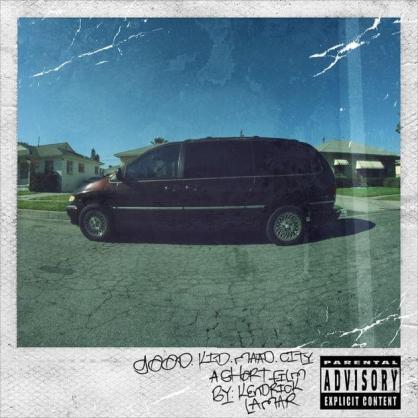
In all honesty there was very VERY little in it between this and To Pimp a Butterfly, but while To Pimp a Butterfly is the encompassing diagnosis of the issues discussed in this album, Good Kid, M.A.A.D City, like TV series The Wire before it, is the reality on the ground, the snapshot of what is like to grow up in a poor, crime ridden neighbourhood which has been pummelled by the war on drugs and the circumstances the people of the city have been born into. It is the zenith, it is the greatest hip hop album of all time, because as well as having incredible songs on its own, it pays homage to the genre and tells the story of the streets which produces the most talent for the thousands who cannot, and shows how close Kendrick was to being one of those thousands who could not.
Set out in the setup of the movie, the album takes us through a story of a teenage Kendrick Lamar Duckworth (or K Dot) of how the streets of Compton shaped him, and how they almost ended him, and how he managed to escape what was destined to be a short life of crime by becoming a musician. The production on the album varies heavily, but each beat is used for a reason and the often downbeat tempos are used to build atmosphere which really makes you picture being in the events of the album. Opening track, the downbeat funk of ‘Sherane a.k.a Master Splinter’s Daughter’ perfectly captures the spirit of lust young Kendrick Lamar had at the time, but brings a twist at the end, where we find he has been tricked by ‘Sherane’ and is actually about to be robbed. This track also introduces us to the use of skits which are continuously used in this album to help the storytelling, as the next 5 tracks go back to before the incident at the end of track 1. ‘Bitch Don’t Kill My Vibe’ features a glorious orchestral sample from Danish soul group Boom Clap Batchelors and works as the opening credits, while the explosive and brash ‘Backseat Freestyle’ and the downbeat and heavily atmospheric ‘The Art of Peer Pressure’ speaks of the attitude and foolishness of young K-Dot and his friends at the time, as they break laws, brag about women and make a lucky escape. ‘Money Trees’ follows it up with a story of the ambitions of these people, giving an alternate slide to it, while Jay Rock’s guest verse is perfect to add another slant about the ambitions of those who resort to crime. The Janet Jackson sampling ‘Poetic Justice’ uses Drakes talents effectively, and creates a bigger sense of naivety being the story returns to where we start of Kendrick being mugged, and from then on the album takes a darker turn.
‘Good Kid’ talks the strongest about what people like Kendrick have to deal with living in Compton on a day to day basis, with police harassment, harassment from gang members and the desperation and how hard it is to survive in the MAAD City. The production of this has a sound fitting for the setting, a classic 90s west coast hip hop styling. This song then breaks into the manic opening half of ‘MAAD City’ which addresses the craziness and the murderous crimes in Compton and how that effects teenagers like K Dot who are then influenced to continue the self-fulfilling prophesy. The second half breaks into pure G-funk as it gets manic and we get a sense that K Dot is doomed to follow this life, before it breaks into commentary about addiction with ‘Swimming Pools (Drank’). Swimming Pools uses an almost hypnotic downbeat production to create a feeling of intoxication and nausea, and talks of the addiction to alcohol so many people Kendrick has known have, mentioning his grandads ‘golden flask’ and using introspective voices inside his head telling him to drinks some more, which by the end of the song has ended in more destruction. The cleverest thing about this song is that despite being a very anti-drinking song, it works remarkably well as a song for partying as well, and from the beat it and the most distinguishable hook on the album this is clearly intentional.
The tour de force, and a song which should be analysed by every high school English class to study language and storytelling, is ‘Sing About Me, I’m Dying of Thirst’. After the events of the skit following ‘Swimming Pools’, where one of Kendrick’s friends is shots, Sing About Me tells the stories of 3 individuals from their own perspective, with it clear that the first 2 characters clearly are having their story told posthumously, while the third we expect is about K Dot himself. The second part of this song talks about how the lack of society around Kendrick is slowly killing him, with ‘money pussy and greed’ three pursuits often endorsed by the culture of hip hop, as his ‘next grave’. This song concludes with the resolution Kendrick needs to get out of the continuing cycle of pain caused by the way his life is going, and to get Real, which on the next track, he explains is not being the stereotype he was falling for or trying to be the topboy, as none of that makes him ‘Real’. At this point the skit shows influence of his parents, helping steer him away from the mess, something it is clear from the previous track isn’t the case for an awful lot of people in his position. The final song ‘Compton’, meanwhile, celebrates Kendrick’s city for better and for worse, with the help the man who put Compton on the map in the first place and created the musical opportunities for Kendrick to succeed, Dr Dre. However the album ends in ambiguity, as the album once again goes back to the beginning, with Kendrick jumping in his Mum’s van to drive to Sherane’s house, adding the question of are we doomed to making the same mistakes in a society which wants us to make them? Or will we be able to resolve ourselves through real change in outlook? Either way this album places you in the heart of Compton like no other rap album has or maybe ever will again, and for this, it is my album of the decade.
Essential Tracks: ‘The Art of Peer Pressure’ ‘Swimming Pools (Drank)’ ‘Sing About Me, I’m Dying of Thirst’
That is the end of the list, I hope you all enjoy even if you deep down knew that Kendrick Lamar was always going to take the top 2 placings. All is left to say is see you all in the next decade.
